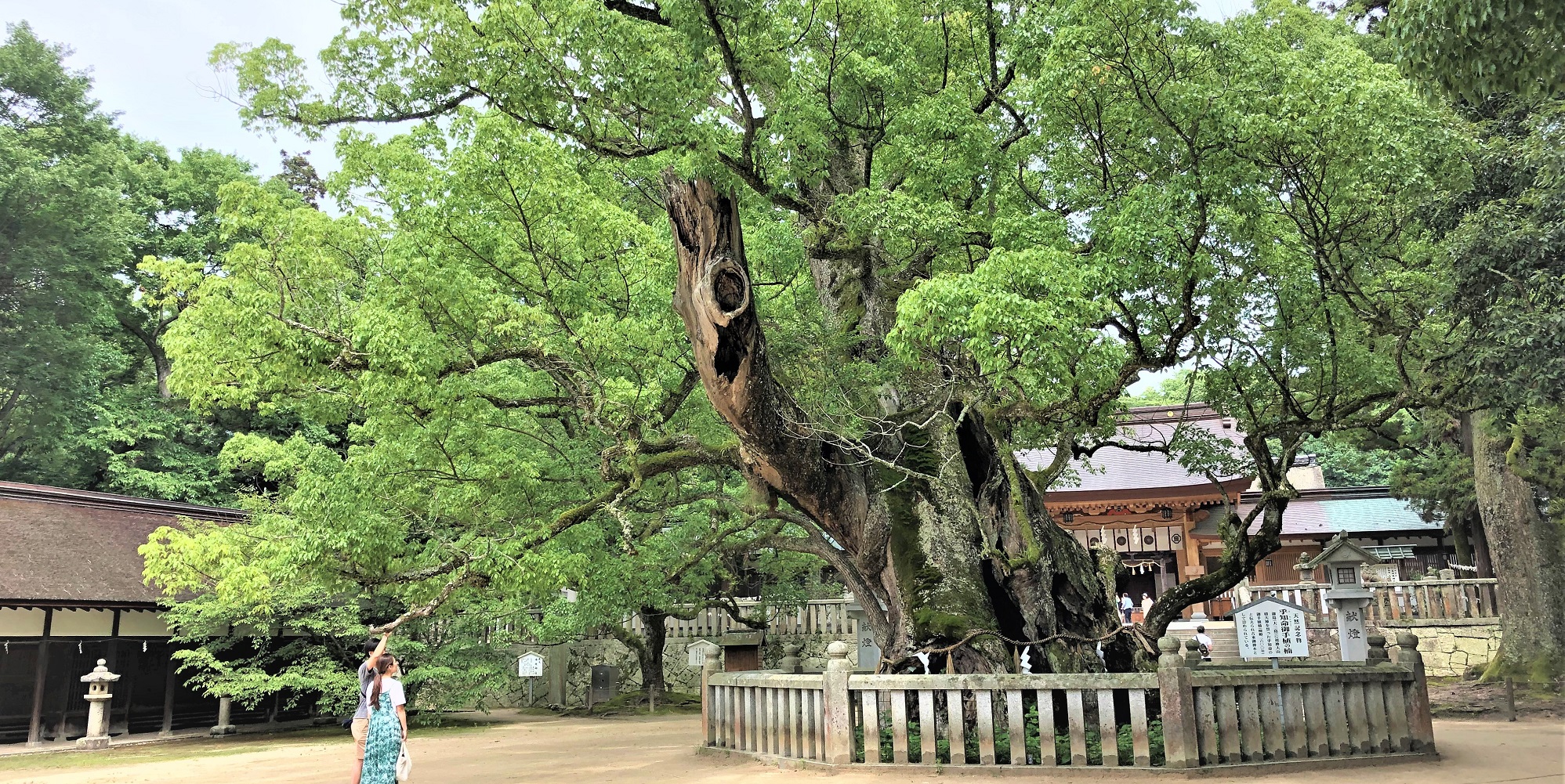
Oyamazumi Shrine 大山祇神社
At the foot of Mt. Washigato on the island of Omishima is the Oyamazumi Shrine. The only taisha, or grand Shinto shrine, in the Shikoku region, Oyamazumi Shrine is surrounded by a grove of camphor trees. The trees stretch over much of the shrine complex, creating a quiet, calm ambience: one of them, which stands encircled by a small fence near the entrance, is 2,600 years old.
The Oyamazumi Shrine’s main building dates to 1427. Along with the 17th century worship hall, the main building is designated an Important Cultural Property.
Oyamazumi Shrine is dedicated to Shinto deities associated with the sea, sailors, soldiers, and battles. Throughout Japan’s history, lords, samurai, admirals, and generals have visited the shrine to pray—or give thanks—for victories in battle. In fact, grateful warriors have donated so much of their equipment over the years that Oyamazumi Shrine now boasts the largest collection of historical armor and weaponry in Japan, including eight designated National Treasures and 469 Important Cultural Properties.
All that military equipment is stored in two connected buildings, the Shiyoden and the Treasure Hall. Both buildings have the wide eaves and peaked roofs typical of shrine architecture, but while the Treasure Hall is painted in traditional white and red, the Shiyoden is more modernist, faced with plain concrete and plaster.
Nearby, another modernist building, the Kaiji Museum, stands out among the trees with its distinctive steep split roof. Appropriately, the Kaiji Museum is a maritime museum, featuring specimens of sea creatures, and at the center, the Hayama Maru, the ship Emperor Hirohito used for studying marine life.
The road leading to the torii gate of the Oyamazumi Shrine is a well-preserved example of a sando, or approach road to a shrine. Pilgrims would arrive at Omishima by sea and walk along the sando from the port to the shrine. Nowadays, people use a different route to get to Oyamazumi Shrine, but the sando is still worth walking. Part way along the road is an old house that has been transformed into the Omishima Home for All, a public community hub. The transformation was spearheaded by architect Toyo Ito’s Initiative for Tomorrow’s Opportunities in Architecture project, which seeks to revitalize regional communities like Omishima.
大山祇神社镇守于大三岛鹫头山的山麓,是四国唯一的神道大社,被称为“日本总镇守”。神社周围的樟树群茂密葱茏,是日本最古老的原始樟树林社丛(即镇守神社的森林),现已被指定为国家级“天然记念物”。林木几乎覆盖了寺内大部分区域,营造出一片静谧安详的气氛。其中,入口附近被栅栏围住的巨型樟树树龄长达2600年,据说可为人们带来姻缘、结婚运、事业运、胜利运、健康运等诸多运势。相传屏息绕树三周,愿望即可实现。
大山祇大社正殿的竣工可追溯至1427年,拜殿则建成于17世纪,二者均已被指定为“重要文化财”。
大山祇大社供奉着与海洋、船员、士兵、战争密切相关的神道神祇。纵观日本历史,有无数大名、武士、武将、大将来此参拜,或在战争取得胜利后前来敬神。心怀感激的武将们常年进奉各种武具,以致大山祇大社如今收藏的古代防具和武器数目在日本首屈一指,其中有8件国宝和469件“重要文化财”。
这些武具均被存放于紫阳殿和国宝馆这两栋相连的建筑中。两座建筑均具备神社建筑典型的宽檐和尖顶,国宝馆采用传统的白红配色涂装,而紫阳殿则以混凝土和灰泥为主要材料,较之前者更具现代感。
附近另一座现代化建筑“海事博物馆”,以其独特的陡峭劈裂屋顶在树林中格外显眼。顾名思义,海事博物馆以海洋为主题,陈列着海洋生物标本,中央则展示着昭和天皇研究海洋生物时的乘船“叶山丸”。
通往大山祇神社鸟居的参道(通往神社的道路)保存良好。过去朝奉者们经海路抵达大三岛,沿参道自港口步行至神社。如今参观大山祇神社虽有不同路线,但参道仍值得一走。途中的一栋旧屋已转型为当地人聚集的社区中心“大三岛共享之家”。为了振兴当地社区,建筑师伊东丰雄(1941- )组织了“思考未来建筑”项目,而“大三岛共享之家”正是在这一项目的指导下完成了华丽转身。
每年6月,大山祇神社将举行为期一个月的例行春祭——大山祭,此外还有例行秋祭、旧历除夕与元旦二合一的“旧例跨年”等祭典活动。
DATA
3327 Miyaura Omishimacho Imabarishi, Ehime
℡ +81-897-82-0032
Admission time: 8:30〜16:30(closed at 17:00)
Admission fee: JPY1,000 (Included the Shiyoden, the Treasure Hall and the Kaiji Museum)
http://ehime-jinjacho.jp/jinja/?p=1542 (Japanese only)













